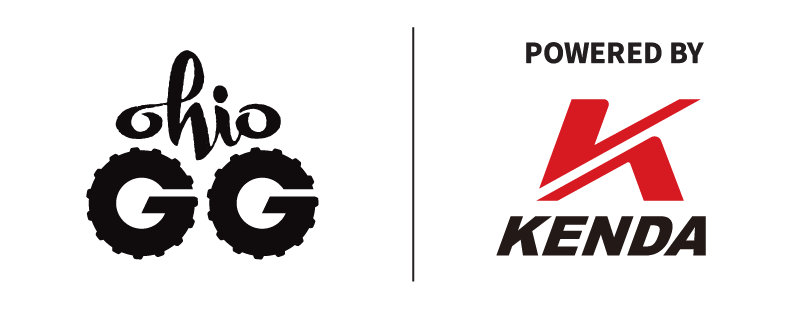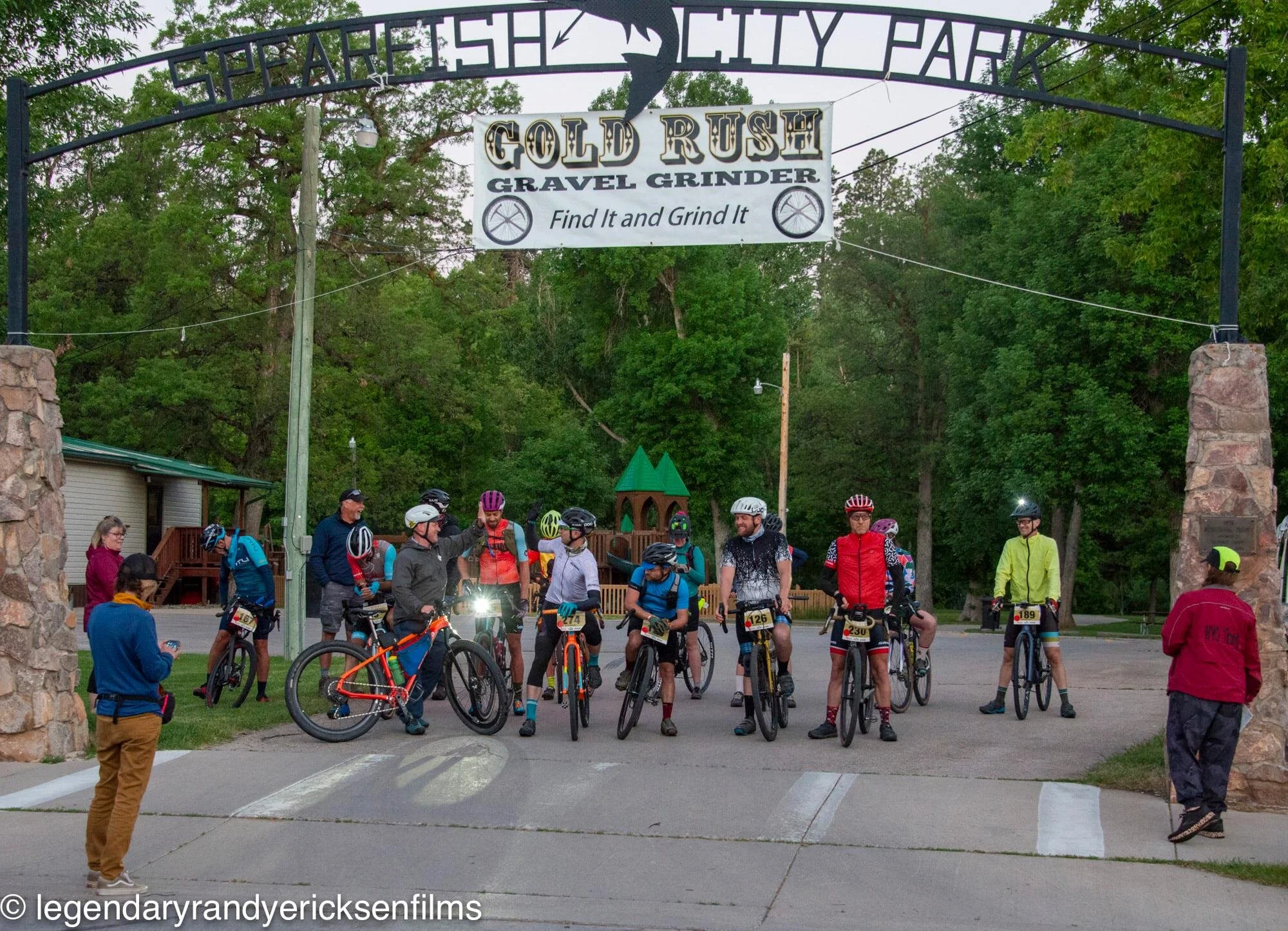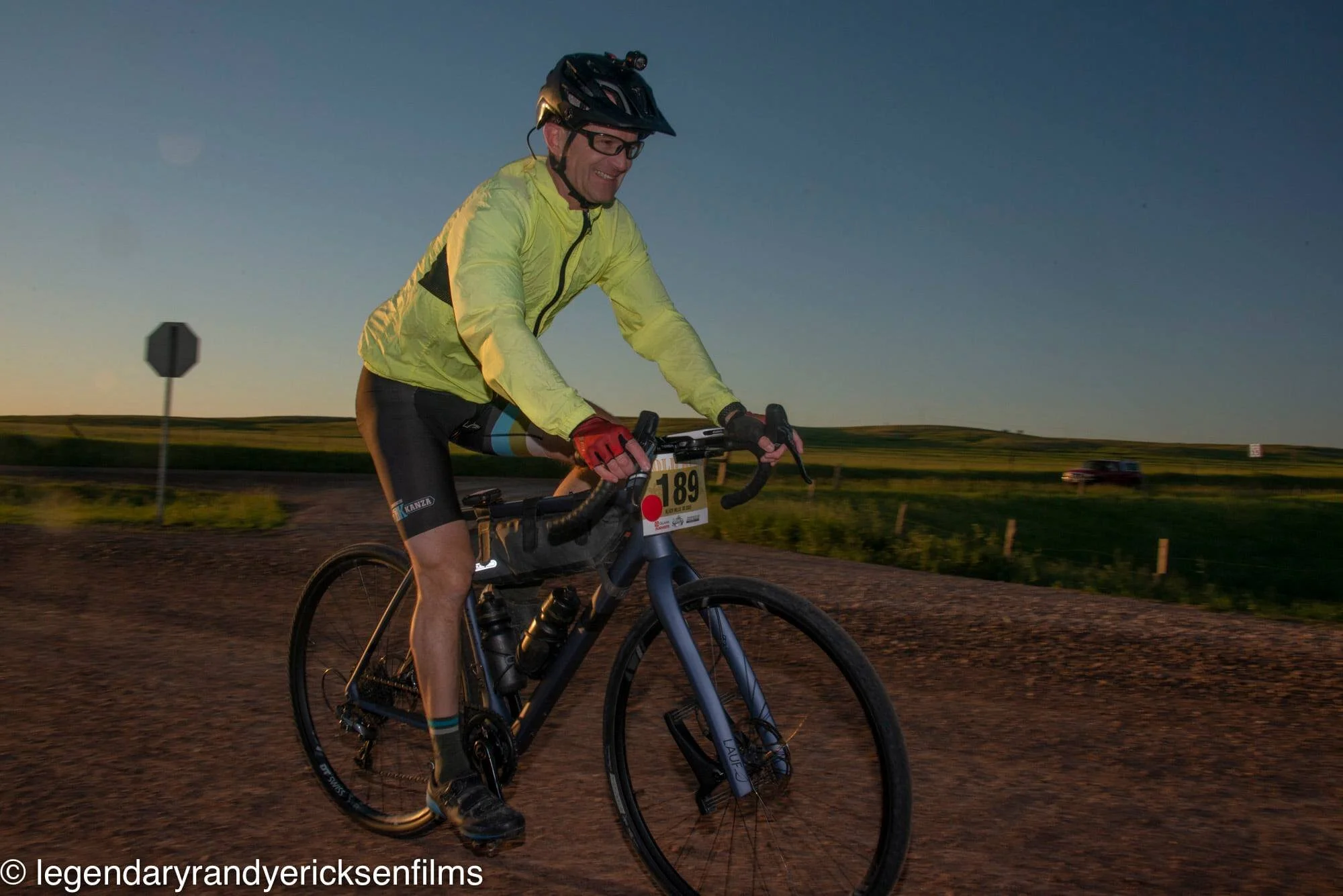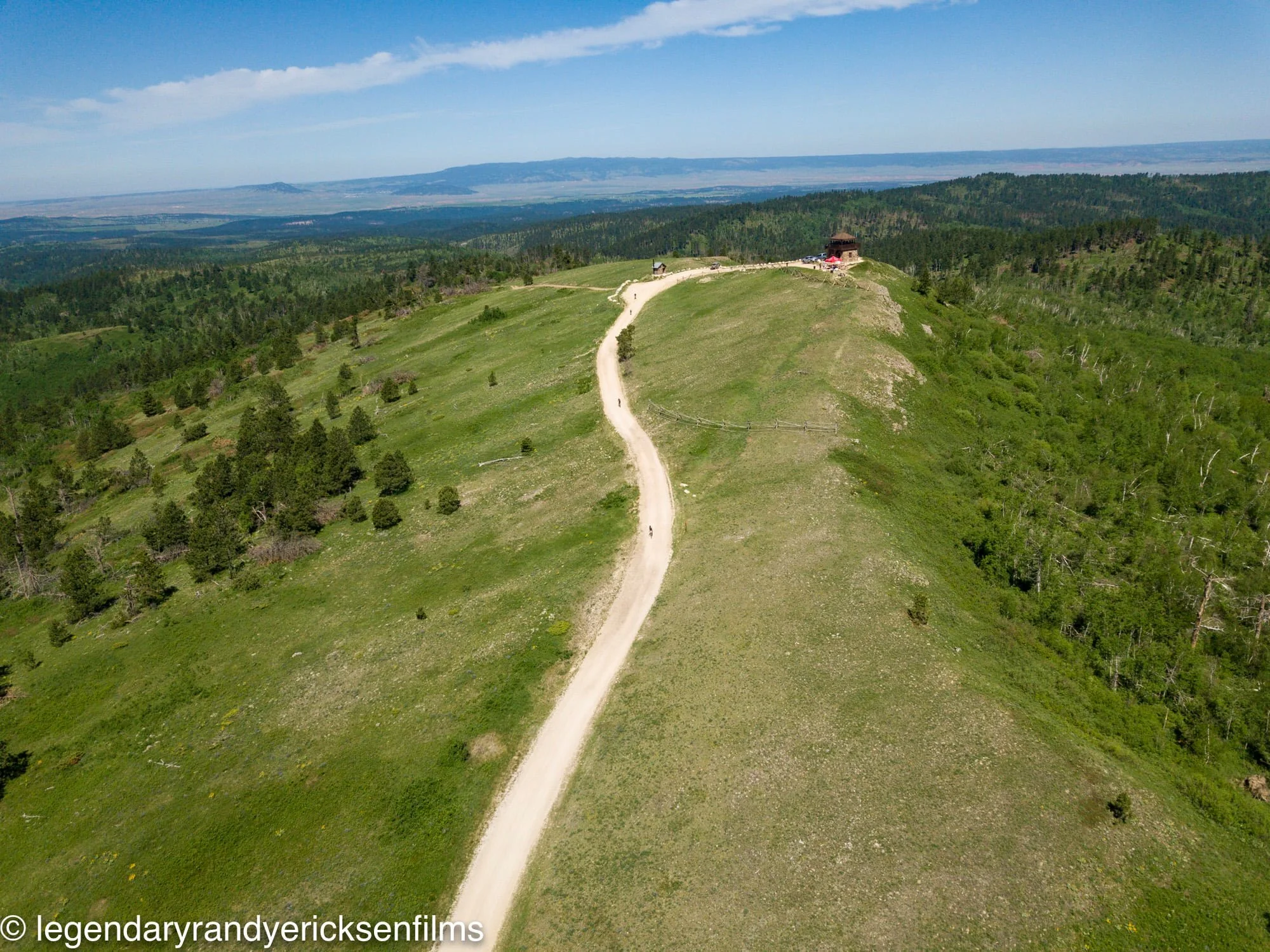Recap: Gold Rush Gravel Race
The Gold Rush Gravel Race is now in its 7th year, hosted by Kristi and Perry Jewett out of Spearfish, SD. The residents of Spearfish have endless miles of gravel roads to play on and it is their joy of riding that makes them want to share their local treasure with others. About 200 riders showed up for this year's race. Most of them were in the "Gold Rush" at the 110 mile distance. There is also a "Fools Gold" 45 mile race, a “Gold Dust” 75 mile event, and I entered the "Mother Lode" 210 mile treat. No way I am driving 2600 miles round trip just to ride 100 miles! There were only 18 registered riders for the 210 mile distance -- a reversal from something like Unbound (Dirty Kanza) where the 200 mile distance is the featured event. This is a small, family event. The Jewetts introduced themselves to all the riders at check-in, and I think they knew everyone's name within a few minutes.
Photo Credit: Randy Ericksen
I opted to drive out to Spearfish, 1300 miles and 19 hours each way. There is nothing like driving across the Great Plains to gain an appreciation for a very different way of life from my own. I am always in awe of the great open spaces, the sparse populations, and the grit of the people who live in these small plains towns. There are also a ton of kitchy Americana tourist attractions that dot the landscape like Wall Drug, The Mitchell Corn Palace (below), Laura Ingalls Wilder home, a Reptile Zoo, a car museum, a frontier town, among other things.
Spearfish is a medium sized western mountain town, one stop further west than the infamous Sturgis. It sits at 3800 feet of elevation and has a cool vibe that is similar to Colorado Front Range towns, but on a smaller population scale. There is a fun bike shop in town that stocks an impressive array of high end bikes. You can tell what the local riding is like by seeing rows of gravel, adventure and mountain bikes in the shop -- hardly a road bike anywhere. I was impressed by the number of locals who had great bikes on their car and tooling about town.
The race starts at 3800 feet but quickly climbs. After just 20 miles we were above 5000 feet and basically stayed between 5000 and 7000 feet of elevation all day until the last few miles of the course. You don't think of South Dakota having that kind of elevation, but it was defintely a factor. This is 2000 feet higher than where I lived in Fort Collins for 4 years. For a flat lander like me, the elevation was a deciding factor. I had a hard time generating my Ohio-like power all day. I also had an altitude headache that appeared just about 5000ft and stayed there all day until we got below 5000 feet again at the race end. Almost all the other people in the 200 mile distance were all from elevation like Colorado, Idaho and South Dakota.
Photo Credit: Randy Ericksen
The gravel roads in this area are just perfect. The first few miles had very hard packed dirt that was a quick surface. Most all day the roads were "regular gravel" with some soft and dusty contidions due to the dry last few days. There were just a few potholes and a little washboard, but mostly it was smooth gravel. The last 12 miles were pavement, but otherwise there was hardly more than two or three short pavement stretches in the race.
There is a lot of climbing on this course — 12,580 feet of elevation gain. Much of the climbing is long, gradual climbs. The first 69 miles basically climbed a canyon at 2% grade ... it went forever. I can't remember the last time I climbed for four straight hours at the same grade. However, there area also several roads in the 10% range. Not too much steeper than 10-12%. Mercifully, the last 30 miles were mostly downhill, with the last 12 miles down the canyon at 2% on pavement. The gradient is NOTHING like Ohio which features lots of little steep climbs. The climbing felt a lot like a NUE ultra mountain bike race, minus the single track.
Photo Credit: Randy Ericksen
The race had perfect weather. It was 50 degrees at the pre-dawn start. What I didn't expect was that as we climbed it got a lot colder. I figured the sun would come up fast enough to warm things up quickly, but we climbed for the first two hours in a canyon and the sun didn't hit us at all over the steep canyon walls. The temps quickly fell into the lower 30s and we rode for two hours in about 34 deg temps. I had to stop to put on full gloves when my hands went numb ... in June! When the sun came out, it warmed up quickly. Most of the day the temps were in the upper 70s and lower 80s, but it was a very dry heat. I finished about 30 minutes after sunset and so in the early evening the temps again fell fast at elevation and didn't warm up till we hit town. The sun is SOOOO vibrant. I can't believe how bright the sun shines. Again, nothing like Ohio where the sun is always muted by atmosphere and often clouds too. Sunscreen and dermatologists are both super important in these mountain communities. Three years ago, apparently the temps hit 107 for a high. Two years ago, they had a hail storm that dumped three inches of hail on the course and the temps hardly rose above 40 all day. So the weather could be anything up there, and you could experience multiple extremes several times in the same day. We totally lucked out with nearly perfect weather.
This area of the Black Hills is big cattle ranching territory. At least half of the route was open grazing land. That means cattle guards, lots and lots and lots of cattle guards. I think must have crossed 50 of them, and you were never quite sure how well graded they were or if they were missing a bar, so it was wise to slow down for most of them. There were a lot of cows on the course, just standing all over the road. I've had experience riding through cattle in Dirty Kanza, but here they were more concentrated. Plus a lot of these roads are in narrow canyons, so there is not a lot of room for the cattle to move off the road. It is a little unsettling when riding through a herd of cattle, especially when mom and her calf are on different sides of the road. These are big animals -- bigger than the Ohio dogs. Fortunately, the cows seemed totally uninterested in us and mostly let us pass through without incident or concern. No Bison out here -- that's a totally different game. Never, never, never ride through or near Bison.
The race had five checkpoints. The first was a neutral water stop at Mile 36 that serviced all distances. The next was the TrailEdge Lodge at Mile 69. We hit it again at Mile 171 on the way back. Then two check points at Mile 122 and Mile 152. The checkpoints were lodges or bars. The area is very very remote. Hardly any people or structures up here. Most riders had support crew meeting them at the checkpoints. This was a big advantage. I was flying solo, so I had to buy supplies at the checkpoints. These are no quick-stop convenience stores. You had to wait for a burger to be fried, or wait for a coke in a glass. I burned 1.25 hours off the bike and I probably could have cut half that time by having a support crew at the checkpoints helping me out.
Most all of the course was in a gulches or open canyon territory. There were more trees than I expected. The scenery was just otherwordly, worth the drive out there alone. You can get an idea from the pictures. It almost seemed fake it was so consistenly pretty.
One of the features was the Mickelson Trail -- a gravel rail trail. We were on the trail for only 15 miles (it runs for over 100 miles). There were four tunnels in our segment of the trail. Another feature was Rifle Pit Rd which was a 7 mile segment of jeep two track that was rutted, dry, and had soft dusty washes mixed with rocks. This was the only section of road all day that was technical. Unfortunately, it comes right at the end of the day, and I just got through it before the sunset. I would not want to ride this section in the dark. Other than Rifle Pit, all the gravel is super tame so you could run 35mm tires (or 38 or 42) and be just fine. I think the race organizers recommendation of 38mm is perfect and what I ran for the event. I had no mechanicals all day. The bike worked perfectly. I didn’t even bother to lube the chain.
I finished in 9th place. Apparently there were three riders just a few minutes ahead of me -- if I had known I would have skipped a checkpoint and tried to bridge up. I had an ok day. My power was lower than I wanted, but I kept up with nutrition and hydration and stayed fairly fresh all day. Though I was ready to be off the bike after a 16 hour day.
Overall this is a terrific event. It is a great alternative to the insanity of Dirty Kanza. The scenery is worth the trip alone, even if you do not participate in the race. Hit up Kristi or Perry if you are passing through town and want some local intel on putting together a ride in the area.














